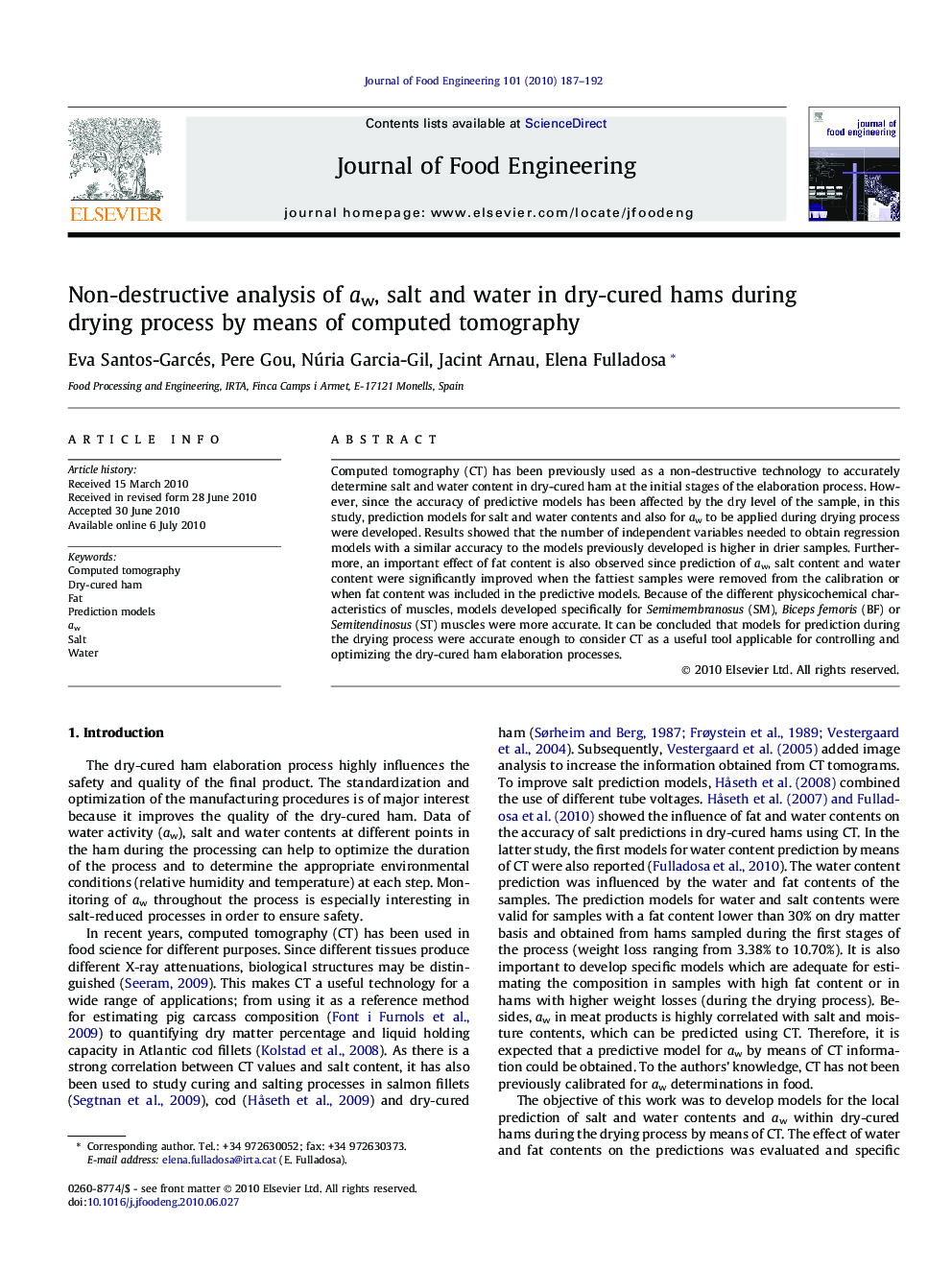| Article ID | Journal | Published Year | Pages | File Type |
|---|---|---|---|---|
| 223863 | Journal of Food Engineering | 2010 | 6 Pages |
Computed tomography (CT) has been previously used as a non-destructive technology to accurately determine salt and water content in dry-cured ham at the initial stages of the elaboration process. However, since the accuracy of predictive models has been affected by the dry level of the sample, in this study, prediction models for salt and water contents and also for aw to be applied during drying process were developed. Results showed that the number of independent variables needed to obtain regression models with a similar accuracy to the models previously developed is higher in drier samples. Furthermore, an important effect of fat content is also observed since prediction of aw, salt content and water content were significantly improved when the fattiest samples were removed from the calibration or when fat content was included in the predictive models. Because of the different physicochemical characteristics of muscles, models developed specifically for Semimembranosus (SM), Biceps femoris (BF) or Semitendinosus (ST) muscles were more accurate. It can be concluded that models for prediction during the drying process were accurate enough to consider CT as a useful tool applicable for controlling and optimizing the dry-cured ham elaboration processes.
